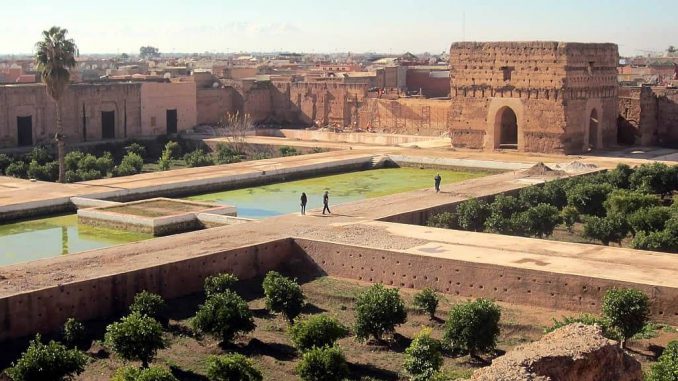
The Badie Palace was built in 1578 by the Saadian Sultan Ahmed Al Mansour Addahbi, after his victory over the Portuguese in the famous battle of Wadi al-Makhzen. It is considered a true architectural masterpiece that has been crafted by the most qualified Moroccan and foreign architects, to the point that some historians have classified it as one of the wonders of the world. Today, it is a major tourist monument that bears witness to the Kingdom’s civilization. As a result, it is one of the most popular tourist destinations in the world.
Today, the palace also hosts many major festivals and artistic and cultural events in Marrakesh, such as the festival of popular arts or the festival of laughter.
The Badie Palace included water basins, fountains, gardens as well as columns, domes, arches, shops, and prayer rooms. Precious materials such as zellige, gold, crystal, bamboo, porcelain, marble and carved wood have been used in its construction.
Historians disagree on the origin of its name. Some say it corresponds to a name among those of ALLAH, while others claim that it corresponds to that of one of the wives of Sultan Al Mansour Addahbi, while others specify that it comes from “Badie”, whose palace is decorated, and which means “ceramic” in Moroccan dialect.
The Badie Palace is mentioned in many ancient works and sources, including the book “Voyage en Italie” (Trip to Italy) in which this monument was mentioned, stating in particular that near the city of Pisa, Italian workers carved fifty tall marble columns for the king of the city of Fez, which were exchanged for their sugar weights.
Badie Palace was the pride of the Saadians who held all their important celebrations, receptions and festivals there. However, the Alaoui Sultan Moulay Ismail demolished the palace as soon as he came to power and used all his decorations and works to build and decorate his capital, Meknes.
Today, the only parts that remain from the Badie Palace are some of the palace’s wall, some basins and gardens, as well as some remains.

Be the first to comment